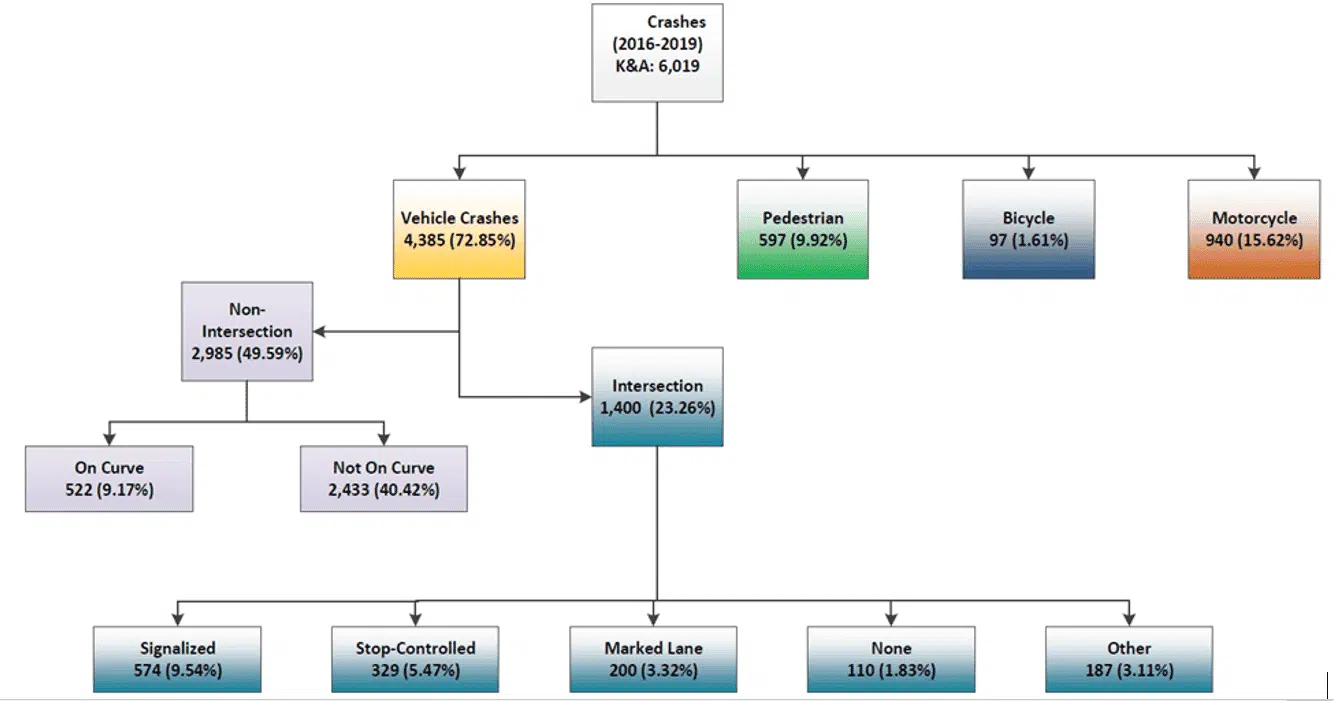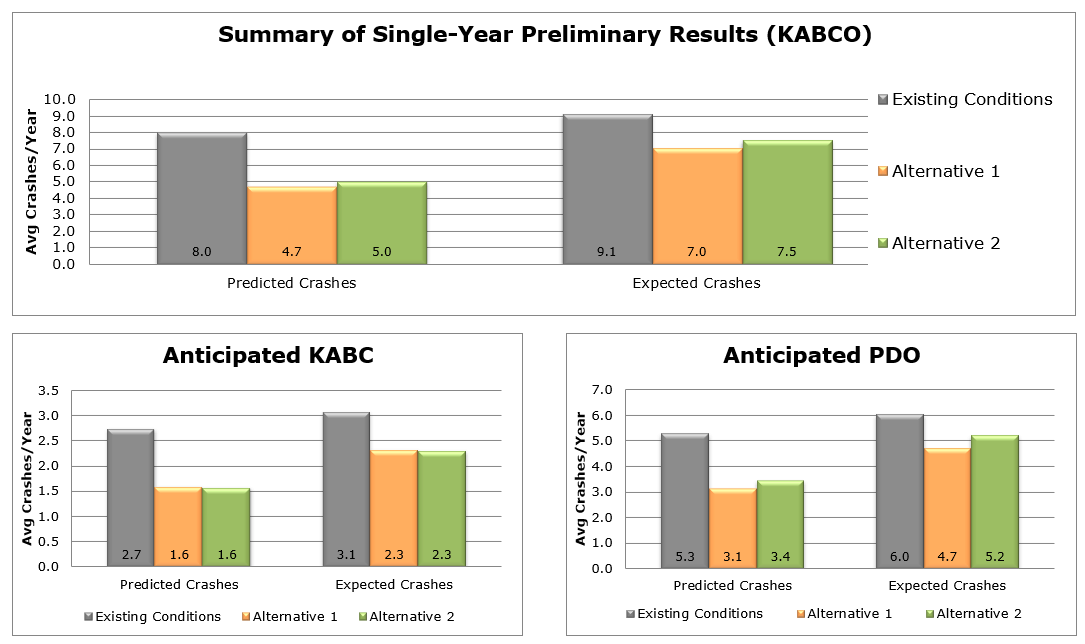- July 17, 2020
- Perspectives
The Safe System Approach: Proactively Promoting Safety to Reduce Roadway Fatalities


Mike Colety,
PE, PTOE, RSP2I
Transportation Project Manager

Dhruva Lahon,
PE, PTOE
Transportation Project Manager
In 2018, the World Health Organization found that approximately 1.35 million people die each year as a result of road traffic crashes, and that road and traffic injuries are the leading cause of death for children and young adults ages five to 29. Accommodating human error—also known as the Safe System Approach—has emerged as the leading technique to mitigate these risks. Kimley-Horn’s Mike Colety, PE, PTOE, RSP2I, and Dhruva Lahon, PE, PTOE, discuss best practices for integrating this new approach into traffic safety engineering.
The Safe System Approach to Roadway Safety
The Safe System Approach has been successful throughout the country and internationally. It proactively promotes safety among users and roadway facilities. The main aspects of this approach include:
- Managing interactions of road infrastructure, vehicles, and travel speeds to promote safety of all road users using a system-wide strategy
- Accommodating human error by providing a forgiving operating environment
- Achieving widespread user compliance with road rules and laws through legislative and enforcement strategies
Historically, the favored roadway safety approach focused on reducing total crashes and crash rates—primarily in hot spot locations. As a result, safety countermeasures were developed after crash hot spots appeared. In contrast, the Safe System Approach proactively works to eliminate fatal and serious injury crashes instead of all crashes. To meet this goal, it uses a systemic application of low-cost countermeasures at all high-risk roadways to target specific crash types.
Use Predictive Modeling to Identify and Prioritize High-Risk Roadway Features

Kimley-Horn’s systemic safety approach identifies roadway features that are at high risk for fatal or serious injury crashes—even if they currently do not have a high-crash frequency. Our safety specialists apply a data-driven process to identify a municipality’s areas of improvement, working to reduce the number of fatal and serious injury crashes. This systemic approach aims to prevent crashes at a wider scale before they happen.
Kimley-Horn also performs predictive crash analysis to identify locations with the greatest potential for improvement and then to determine alternatives that best support safety—combining crash data, roadway features, and traffic volumes to compare expected safety performance of different project alternatives. We perform quantitative safety analysis to manage road safety, prioritize safety projects, and communicate the safety impacts of projects to our stakeholders and the public using performance metrics.

Use Multiple Data Sources to Identify and Prioritize Safety Opportunities
Road safety plans—tailored to the scale and scope of each situation—often go by a variety of names. In all cases, we use a data-driven approach to identify proactive safety countermeasures and increase overall safety for all road users. Kimley-Horn uses GIS to analyze crash datasets, map existing infrastructure, and perform geospatial crash analysis. We include representation from the traditional 4Es of safety (Education, Emergency Response, Enforcement, and Engineering) to obtain insight into the opportunities and constraints in improving safety. This data-driven approach is then employed to develop a prioritized list and cost of proposed safety improvements. These plans provide the basis for systemic implementation of safety countermeasures.
Kimley-Horn has developed strategic Vision Zero, Local Road Safety, District Road Safety, Corridor Safety, and Strategic Highway Safety Plans for agencies across the country. We use a multidisciplinary approach, bringing together diverse stakeholders to work toward the shared goal of zero fatal and serious injury crashes. We also incorporate equity into our road safety plans, considering the representation of racial groups, socioeconomic groups, vulnerable road users (e.g., pedestrians and bicyclists), and transportation strategies that are implemented equitably.
Use Custom Safety Analysis Tools and Dashboards to Identify Critical Opportunities
Kimley-Horn uses data analytics and data-driven evaluation to develop safety analysis tools and custom dashboards that are specific to our clients’ needs. Our safety analysis tools aim to determine the countermeasures that have the greatest potential for crash reduction, specific to the local conditions.
In addition, we have developed traffic safety dashboards and tools to support Strategic Highway Safety Plan implementation that display crash facts for overall fatalities and emphasis areas—such as pedestrians—and track the implementation status of safety action items. These tools track progress toward safety performance management targets in response to federal regulations applicable to all Departments of Transportation and Metropolitan Planning Organizations.
Need assistance incorporating these innovative safety techniques in your area? Contact Dhruva or Mike for more information.
About the Authors

Mike Colety, PE, PTOE, RSP2I
For more than 24 years, Mike has been responsible for the planning and design of transportation facilities that incorporate safety and functionality. He specializes in highway safety and is the Vice-Chair of the TRB Toward Zero Deaths subcommittee. Mike has experience applying the Human Factors Guidelines to highway safety projects in Nevada and has managed several projects involving extensive stakeholder and public involvement components. His focuses on the development and implementation of safety analysis approaches and guidelines for incorporating quantitative safety processes.

Dhruva Lahon, PE, PTOE
Dhruva has more than 15 years of experience in traffic operations, safety analysis, traffic design, and transportation planning. She has successfully completed studies with an emphasis on improving multimodal operations and safety at intersections and along corridors. She has extensive experience incorporating traffic and safety improvements in planning, design, and constructions phases of a project. She has developed safety plans for agencies to help achieve their Road to Zero goals. As part of these safety plans, Dhruva incorporates recommendations from stakeholders to develop and prioritize improvements for a phased safety implementation.
